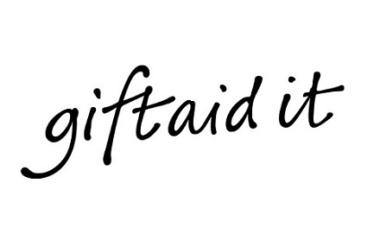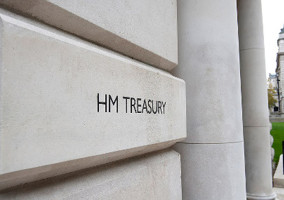This article compares the Gift Aid, VAT and corporation tax impacts of donations made under Retail Gift Aid versus standard charity shop donations.
HMRC’s Retail Gift Aid guidance is currently almost 7,000 words long! It contains a lot of information about the different methods, and who to send letters to and when etc. This detail can be overwhelming, so in this article we are stepping back and explaining the principles of Retail Gift Aid.
Ultimately, if your scheme hasn’t been set up properly for Gift Aid, VAT and corporation tax purposes, then it doesn’t matter who you send letters to and when. Read on to find out the ins and outs of Retail Gift Aid and how to make the most of it.
Normal donations to charity shops
Normally, when an individual donates goods to a charity shop, the following steps take place:
- An individual donates goods to a charity shop
- The charity shop sells the goods
Gift Aid
This is a donation of goods, not cash, to the charity. These donations are not eligible for Gift Aid, because Gift Aid can only be claimed on donations of cash.
VAT
The sale of donated goods by a charity (or its trading subsidiary) is zero rated. This means that the charity can recover the VAT it incurs on any related costs (e.g. the costs of running the shop).
Corporation tax
The sale of donated goods is treated as the realisation of the value of a donation, and is exempt from corporation tax (as long as the proceeds are spent on charitable purposes only).
Donations under Retail Gift Aid
When an individual donates goods to a charity shop under Retail Gift Aid, the following steps take place:
1. The individual brings the goods into the charity shop.
2. He signs an agency agreement and a Gift Aid declaration (normally this is all covered on one form). The agency agreement sets out that the charity will sell the goods on his/her behalf, and charge a commission for doing so.
3. The charity shop sells the goods.
4. The charity writes to the donor, if required by the method they are following (Standard method, Method A, Method B).
5. The charity treats the net sales proceeds (sales proceeds less the commission) as a donation under Gift Aid.
On rare occasions, the individual may ask to be paid the sales proceeds. In which case, the charity will keep the commission and transfer the net proceeds to the individual, so will not have any Gift Aid-able income.
Gift Aid
Donations under Retail Gift Aid are eligible for Gift Aid because they are not a donation of goods to a charity. The individual asks the charity to sell the goods on their behalf and then donates the net proceeds to the charity, so this is a donation of cash.
VAT
VAT is only recoverable on taxable business activities. Charities must charge a standard rated commission on their Retail Gift Aid sales in order to make it a taxable business activity. If a charity sold goods on an individual’s behalf without charging a commission, it would be providing this service for free, and it would not be a business activity. By charging commission, the charity is able to recover the VAT it incurs in relation to the Retail Gift Aid sales (e.g. the costs of running the shop).
In HMRC’s guidance notes, it states that the commission “must be set at a reasonable rate to cover the costs of operating the scheme”. It is up to the charity to perform an analysis to determine the costs to it of operating the scheme, and therefore decide on a reasonable commission rate. In their guidance, HMRC goes on to say that if the commission charged does not reflect the real cost of selling the goods on the individuals’ behalves, then it will not be a business activity (and VAT will not be recoverable).
Corporation tax
Acting as an agent and selling the goods on the individuals’ behalves is non-primary purpose trading by a charity. If the commission income, together with any other non-primary purpose trading income (e.g. sales of new goods), breached the small scale trading limit*, then it would be taxable for the charity.
If the small scale trading limit would be breached, then we recommend that you use a trading subsidiary to act as the agent, selling the goods on the individuals’ behalves. Using a trading subsidiary also means you can use Method B, where the threshold for sending letters to donors is proceeds of £1,000 (rather than £100 under Method A). Using a trading subsidiary for activities which would be taxable in a charity, is a recognised model, and is recommended by the Charity Commission. In addition to ensuring the charity does not pay tax, it also protects the charity’s funds should the trading subsidiary’s activities be loss making.
*The small scale trading limit has increased from £50,000 to £80,000 for accounting periods starting on or after 1 April 2019.
Business rates
Where a trading subsidiary is operating a charity shop, consideration needs to be given to business rates relief. In addition, sales of new goods in a shop can potentially impact rates relief as well as VAT and corporation tax.
What to do next
There are many different ways Retail Gift Aid can be utilised, and what works for you and your organisation is unique to your circumstances.
If you already have, or are considering setting up a Retail Gift Aid scheme, we recommend you review the points above and consider whether your scheme is currently structured correctly, if you feel it needs professional advice, please get in touch via the form below.
Luke Savvas is charity tax partner at Buzzacott, which provides advice on setting up a Retail Gift Aid scheme.
This content has been supplied by a commercial partner. Buzzacott are sponsors of the forthcoming Charity Shops Survey 2019.
Related articles
|












